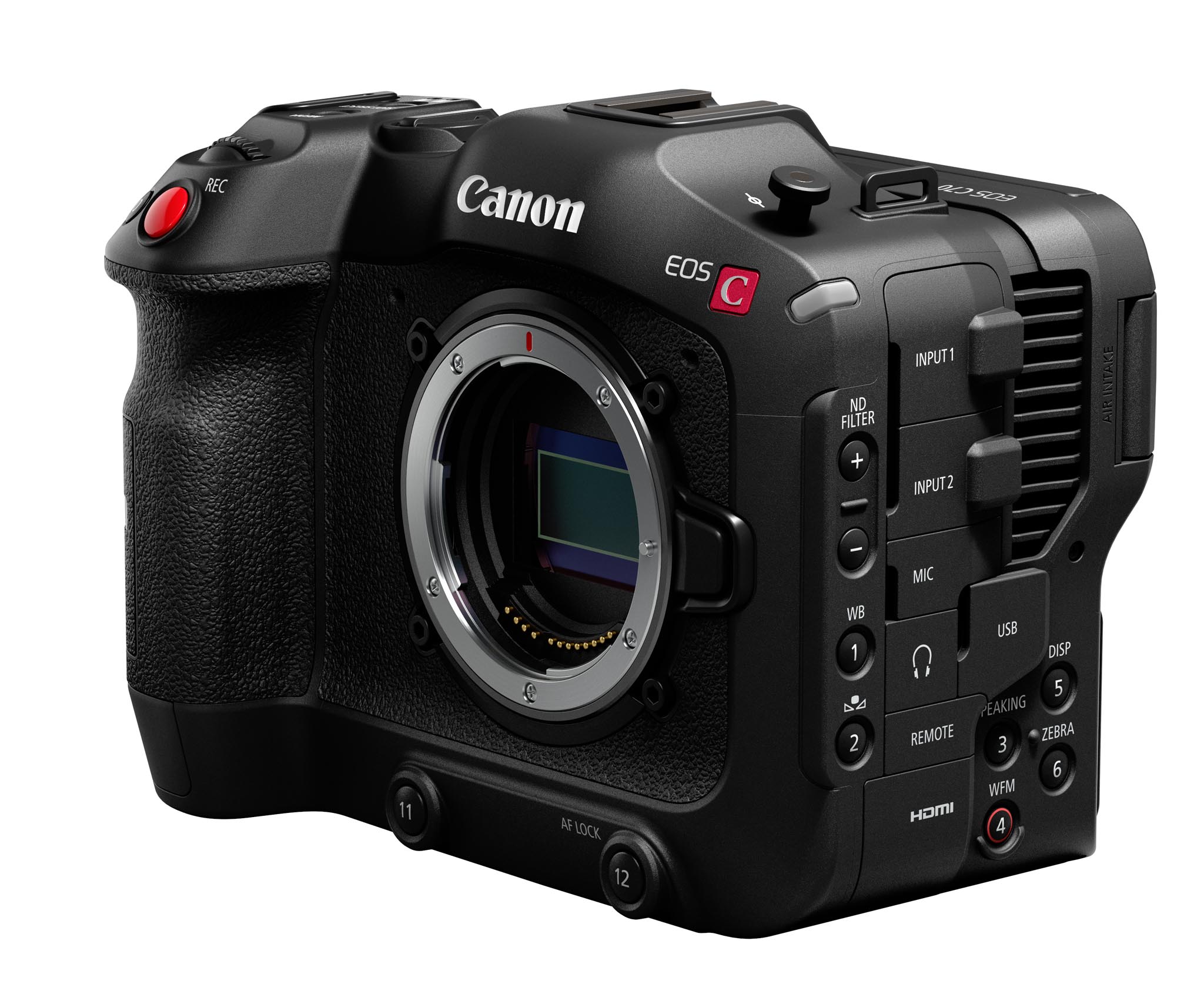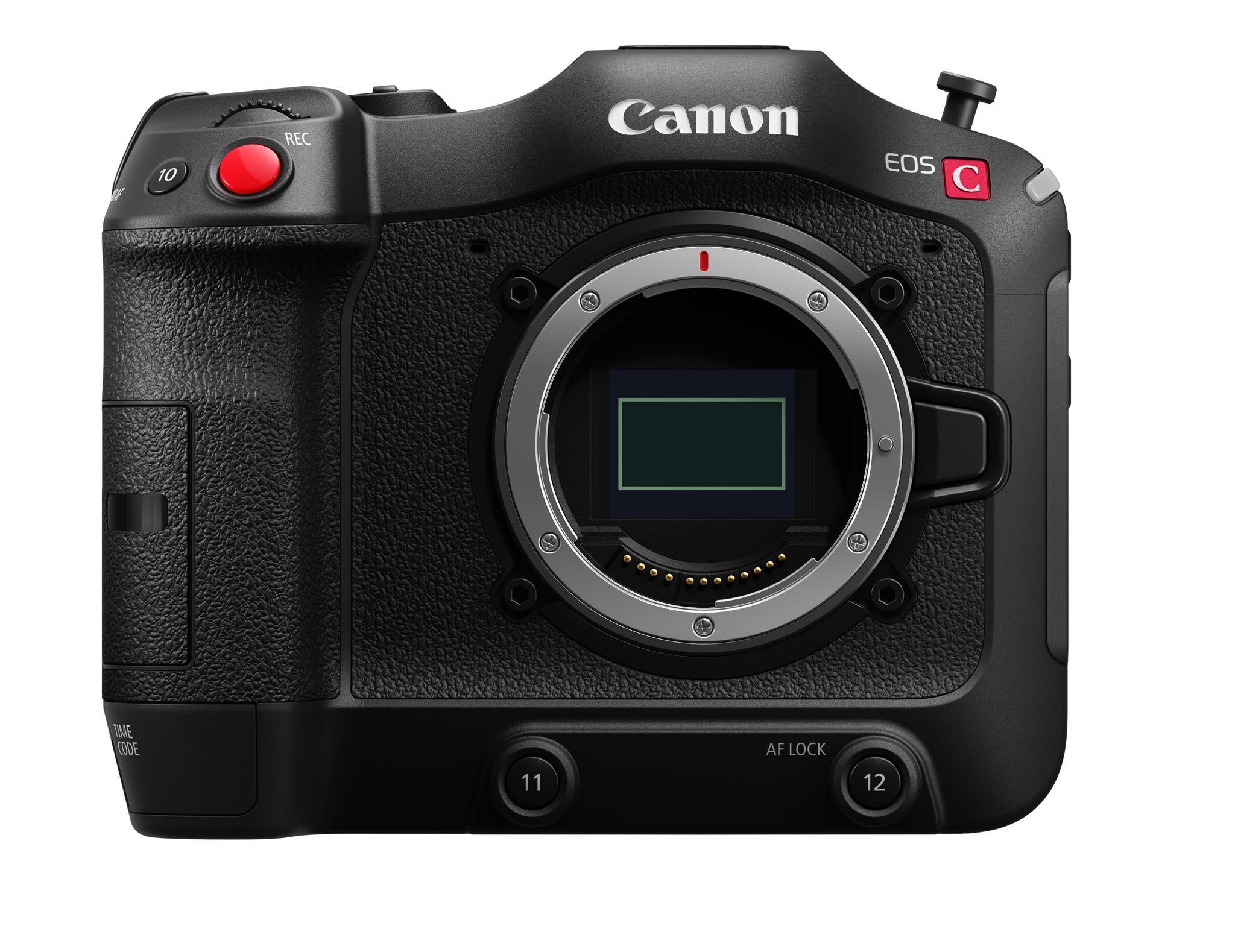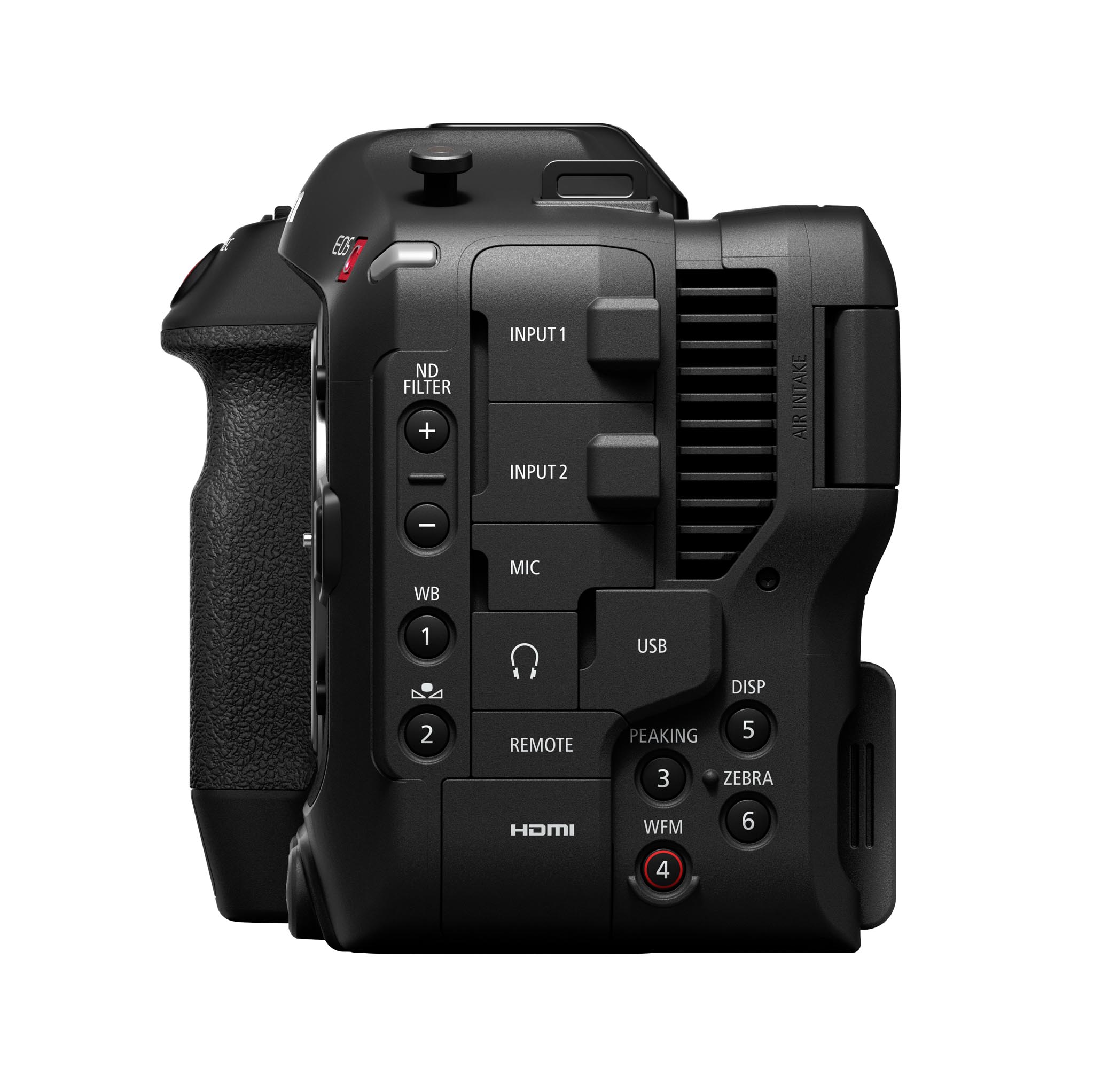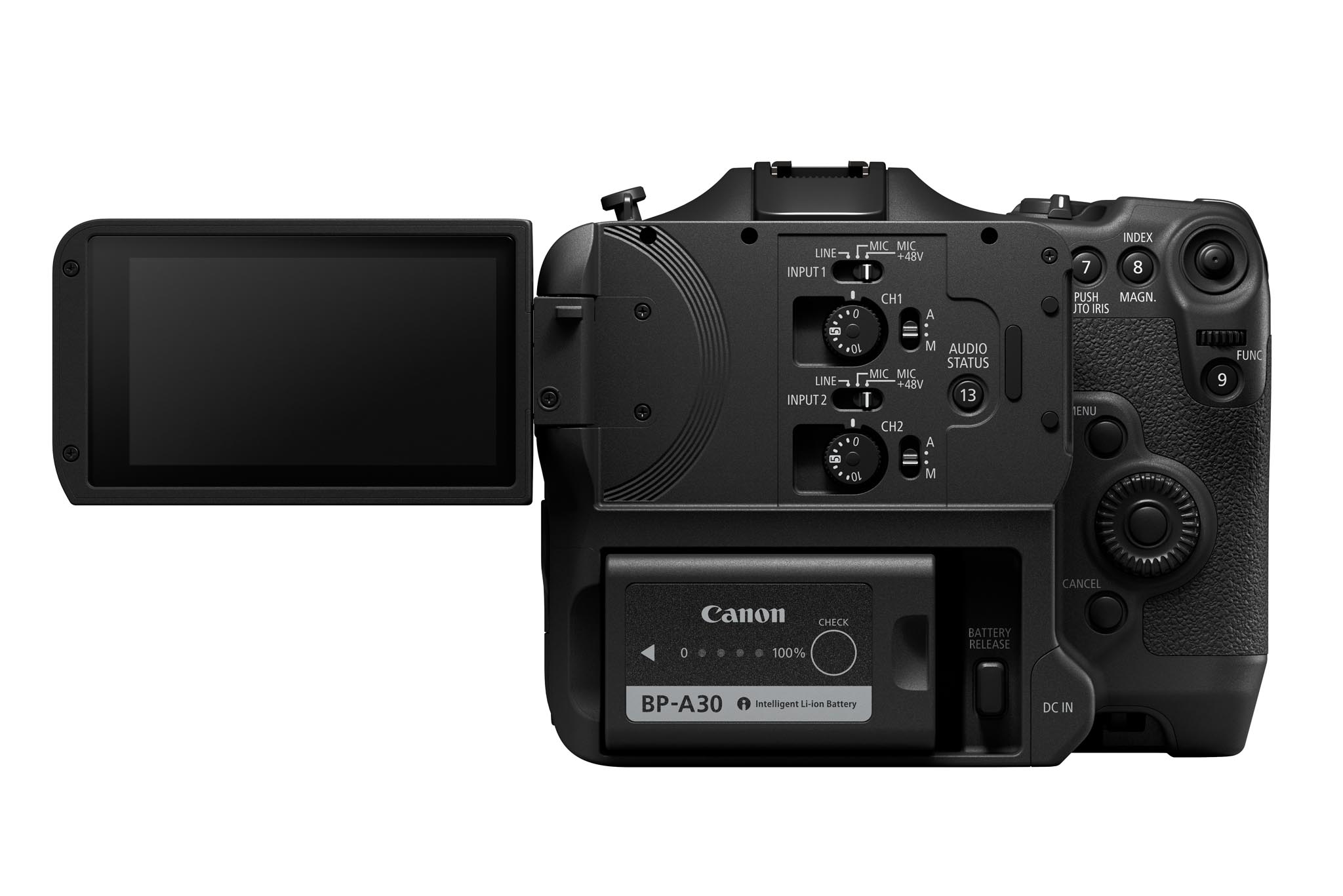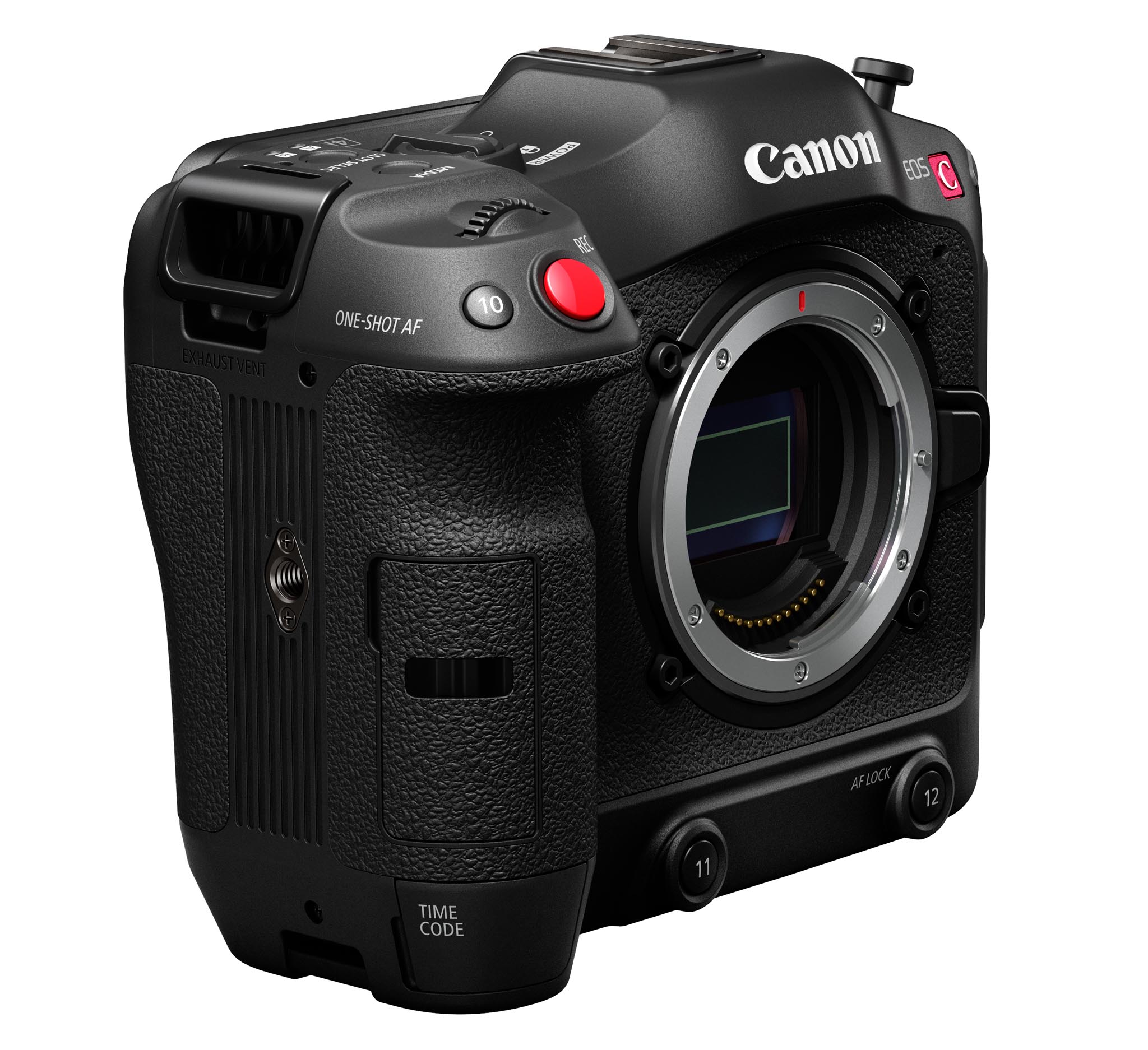September 24, 2020. Canon’s press release begins:
“Canon is excited to announce the company’s first-ever RF mount Cinema EOS camera, the EOS C70 4K Digital Cinema Camera. When the Canon RF mount was first introduced, imaging professionals began to dream about the possibilities that this revolutionary mount system might provide them. One request that Canon consistently heard was to put an RF mount on a Cinema EOS camera so that future lens performance could capitalize on the short flange depth. Just two short years later, those wishes have come true with the new C70 camera.”
One of those people who dreamed of RF mounts was me. The RF mount’s shallow, 20 mm flange focal depth accommodates not only innovative Canon RF lenses, but also—by means of adapters—almost any other cine or photo lens on earth. This includes EF, M, PL, LPL, PV, SP70, R, GX, F, S, BNCR, and more.
The race is on. The new Canon C70 and RED KOMODO have RF mounts. The other 20 mm flange focal depth mount is the L-Mount, created by Leica and shared by SIGMA and Panasonic in the L-Mount Alliance. Sony has the E-mount (18 mm ffd). Fujinon has X-series 17.7 mm ffd and FX 26.7 mm ffd mounts. Nikon uses a 16 mm ffd Z Mount. The point is that shallow flange focal depth allows cameras to be smaller and optical designs to be compelling.
This new EOS C70 most likely will blaze the path for an entire line of new RF mount cine cameras from Canon in both Super35 and Full Frame.
Leading up to this, I can imagine Canon planners and designers watching with interest, or was it dismay, as so many Canon mirrorless cameras seemed to sprout wings and sport lollipops on top—with all kinds of cages, appendages and on-board recorders required to view and capture higher quality video.
“What if we make our R series mirrorless camera thicker,” someone must have said. “We could incorporate the recorder and monitor in back.”
“It should have the familiar handgrip of a mirrorless camera,” another advised.
“It would be great if the camera could autofocus with RF lenses,” someone surely suggested.
Anyway, enough speculation—it’s here now. Let’s dive in and look at the C70.
The EOS C70 camera is like a bridge between the Photography EOS and Cinema EOS families. It is small and lightweight—2.6 lb—and a breeze to handhold.
The C70 has a thin, motorized ND filter unit that is only 6 mm deep. This is fitted in the less-than 20mm gap between the RF mount and the sensor. ND buttons are in the familiar Cinema EOS location: on the camera left side.
13 customizable buttons let you select from more than 80 functions.
Tatsuro Kano, Executive Vice President and General Manager of Canon U.S.A.’s Imaging Technologies & Communications Group said, “The EOS C70 will provide a familiar form and feature set to our entire spectrum of imaging customers. We are eager to see how creatives use this tool and the projects that come from it.”
The camera has a Canon Super 35mm DGO Sensor that reads out each photodiode at two different degrees of gain, like two different exposures for each frame. One “exposure” protects details in highlight areas and the other emphasizes shadow detail. The result is an image with up to 16+ stops of dynamic range.
The C70 can record 4K DCI or UHD up to 120 fps and 2K DCI or HD up to 180 fps.
The camera records in XF-AVC format (variable bit-rate) – both Intra and Long GOP with an MXF file “wrapper”—in 4K at 4:2:2 10-bit. Another choice is Long GOP 10-bit 4:2:2/4:2:0 MP4/HEVC with an MP4 file container – a first in the Cinema EOS line.
The C70 has an active fan cooling system. Air intake is on the camera left side. The exhaust vent is on the camera right side, above the integrated handgrip. This cooling system is isolated from the sensor and electronics to protect them from water, sand, and dust and allows uninterrupted recording for extended periods of time.
Canon EOS C70 4K Digital Cinema Camera
- Sensor: Super35 CMOS Dual Gain Output sensor with Dual Pixel Autofocus. Super16 crop available.
- Total Pixels: 9.6 Megapixels (4206 x 2280)
- Effective Pixels: 8.85 Megapixels (4096 x 2160): 4K/2K DCI
- 8.29 Megapixels (3840 x 2160): UHD/FHD
- High Framerates:4K 120p and 2K CROP 180p
- Image Processor: DIGIC DV 7
- Lens Mount: RF Mount
- Dynamic Range: 16+ stops
- ISO: 100*–160–25600–102400* (* = expanded)
- Internal ND: 2, 4, 6, 8*, 10* stops (* = expanded)
- Focus Guide: Canon’s famous up or down green triangles converge on the monitor when subject is sharp.
- LCD Monitor: 3.5-inch (8.8 cm diagonal) LCD with 16:9 aspect ratio, approx. 2.76 million dots, (1280 x RGB x 720)
- (No EVF)
- White Balance: 2000K to 15000K with -20CC to +20CC green/magenta correction; AWB, Daylight, Tungsten, Set A, Set B.
- SD Cards: 2 slots. SD/SDHC/SDXC supported.
- Video Formats:
- XF-AVC: MPEG-4 AVC/H.264,
- MP4(HEVC): H.265/HEVC
- MP4(AVC): H.264/AVC
- Audio: (1) Linear PCM (16 bit – 48kHz; 4-channel recording), (2) AAC (16-bit – 48kHz; 2-channel recording)
- Color Space: Cinema Gamut, BT.709, BT.2020
- Gamma: BT.709, Wide DR, Canon Log 2, Canon Log 3, PQ, HLG
- Time Code: Count-up Non Drop Frame; Drop Frame (only in 59.94 Hz mode); Regen, Record Run, Free Run, External Source.
- Audio Input: 2 channels Mini-XLR; MIC jack (3.5mm), INPUT REMOTE LANC/RC-V100.
- Output: HDMI, 3.5mm stereo headphone mini-jack
- Input/Output: Time Code, USB-C
- DC IN: 24 V DC
- Battery: 14.4 V DC
- Dimensions, body only: (W x H x D) approx. 6.3 x 5.1 x 4.6 in. /160 x 130 x 117 mm
- Weight, body only: approx. 2.6 lb. /1179.3 g
- Direct Touch Menu System
- Electronic Image Stabilization
- Custom picture processing via import of 3D LUTs and recording to Look Files
Canon Mount Adapter EF-EOS R 0.71x
Canon has sold more than a hundred millions Full Frame EF still lenses. So it’s no surprise that they encourage you to use these lenses on the Super35 C70 with their dedicated Canon Mount Adapter EF-EOS R 0.71x. It’s not a mechanical-only adapter. There are optics and electronics inside. So, this adapter does several important things.
1. It lets you attach EF lenses in the RF mount.
2. It maintains an original Full Frame lens’s angle of view in Super35.
3. A Full Frame lens will gain 1 T-Stop with the adapter in S35 format.
4.The adapter preserves full electronic communication between the lens and camera, enabling optical lens corrections and lens metadata transfer between the C70 camera and certain Canon EF lenses. Compatible EF lenses are EF16-35mm F2.8L III USM, EF24-70mm F2.8L II USM and EF24-105mm F4L IS II USM. As of September 24, 2020. Firmware update provided free of charge, compatibility will be added for additional EF lenses in the future. Even if you do not update the firmware, you can use the EF lens, but it is recommended to use the firmware update in order to effectively use the function linked with the camera.
Price & Availability
The Canon EOS C70 4K Digital Cinema Camera is scheduled to be available in November 2020 for an estimated retail price of $5499.00. The Canon Mount Adapter EF-EOS R 0.71x is scheduled to be available in December 2020 for an estimated retail price of $599.99. For more information go to: cinemaeos.usa.canon.com.
Specifications, availability and prices are subject to change without notice. Actual prices are set by individual dealers and may vary.

